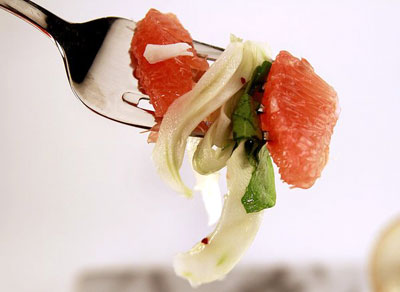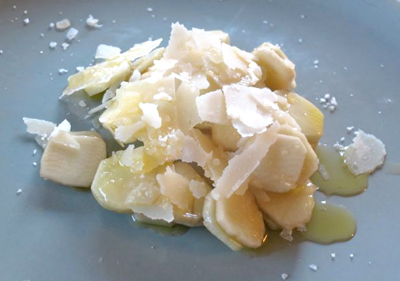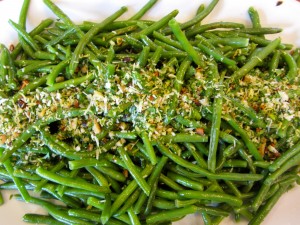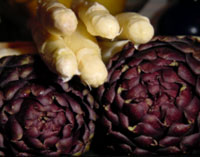 The cook's year can be divided in two: tomato and not-tomato. But sometimes, even the best-intentioned, most locavore-crazy among us so crave a sweet, tart bite in our salads that we break down and grab one of those cottony out-of-season tennis balls. You've done it too. Don't try to deny it.
The cook's year can be divided in two: tomato and not-tomato. But sometimes, even the best-intentioned, most locavore-crazy among us so crave a sweet, tart bite in our salads that we break down and grab one of those cottony out-of-season tennis balls. You've done it too. Don't try to deny it.
In some cases, though, there's an easy alternative. Because happily for us, beneficent nature has ensured that the not-tomato months pair up perfectly with the drowning-in-citrus ones. And in a lot of dishes, a little bit of citrus will give you just what you were hankering for — certainly a lot better than an out-of-season tomato.
This is not a universal solution by any means. I'm trying to picture laying a slice of grapefruit on top of my hamburger. But it does work out often enough that it's worth exploring.
The first time I tried it was more or less by accident. It was dinner time, and I had some lettuce and some cheese. And not much else. But wait, my neighbors Don and Carol had dropped off a sack of tangerines from their tree — perfectly balanced between tart and sweet. What if I put some of those in the salad along with some hazelnuts?

 People say we don’t have seasons in LA. Oh but we do my friends, we do. For example, now is Artichoke Season, a time when (if you’re lucky) you can find a farmer harvesting huge heavy artichokes with a long stem still attached. The artichoke head that we eat is the bud stage of a giant gorgeous purple flower. As the artichoke ages the “leaves” of the bud open ultimately revealing the choke which turns deep lavender. For eating you want the bud pretty tightly closed. And look for heavy artichokes. Heaviness means freshness. When the artichoke is freshly cut it’s cells are full of water. As time goes by the water transpires and evaporates leaving the vegetable light and dry.
People say we don’t have seasons in LA. Oh but we do my friends, we do. For example, now is Artichoke Season, a time when (if you’re lucky) you can find a farmer harvesting huge heavy artichokes with a long stem still attached. The artichoke head that we eat is the bud stage of a giant gorgeous purple flower. As the artichoke ages the “leaves” of the bud open ultimately revealing the choke which turns deep lavender. For eating you want the bud pretty tightly closed. And look for heavy artichokes. Heaviness means freshness. When the artichoke is freshly cut it’s cells are full of water. As time goes by the water transpires and evaporates leaving the vegetable light and dry. Whether making a holiday meal or just a quick weeknight supper, finding a veggie side dish that packs a flavorful punch without a lot of fat or calories (and little effort or clean-up) is sometimes a mystery….so here’s one of my favorites: Oven Roasted Haricot Vert with Pistachio and Parmesan Gremolata.
Whether making a holiday meal or just a quick weeknight supper, finding a veggie side dish that packs a flavorful punch without a lot of fat or calories (and little effort or clean-up) is sometimes a mystery….so here’s one of my favorites: Oven Roasted Haricot Vert with Pistachio and Parmesan Gremolata. Typically the arrival of thistle shaped green vegetables such as asparagus and artichokes signal that Spring has sprung. But last week I was seduced into buying some exotic looking white asparagus and violet artichokes, each of which are much more common in Europe than they are here in the states. Fortunately interest in a greater variety of vegetables is growing and so they are getting easier and easier to find. My two sources? Berkley Bowl and Trader Joe's.
Typically the arrival of thistle shaped green vegetables such as asparagus and artichokes signal that Spring has sprung. But last week I was seduced into buying some exotic looking white asparagus and violet artichokes, each of which are much more common in Europe than they are here in the states. Fortunately interest in a greater variety of vegetables is growing and so they are getting easier and easier to find. My two sources? Berkley Bowl and Trader Joe's. We bought our house in Umbria ten years ago this past summer.
We bought our house in Umbria ten years ago this past summer.